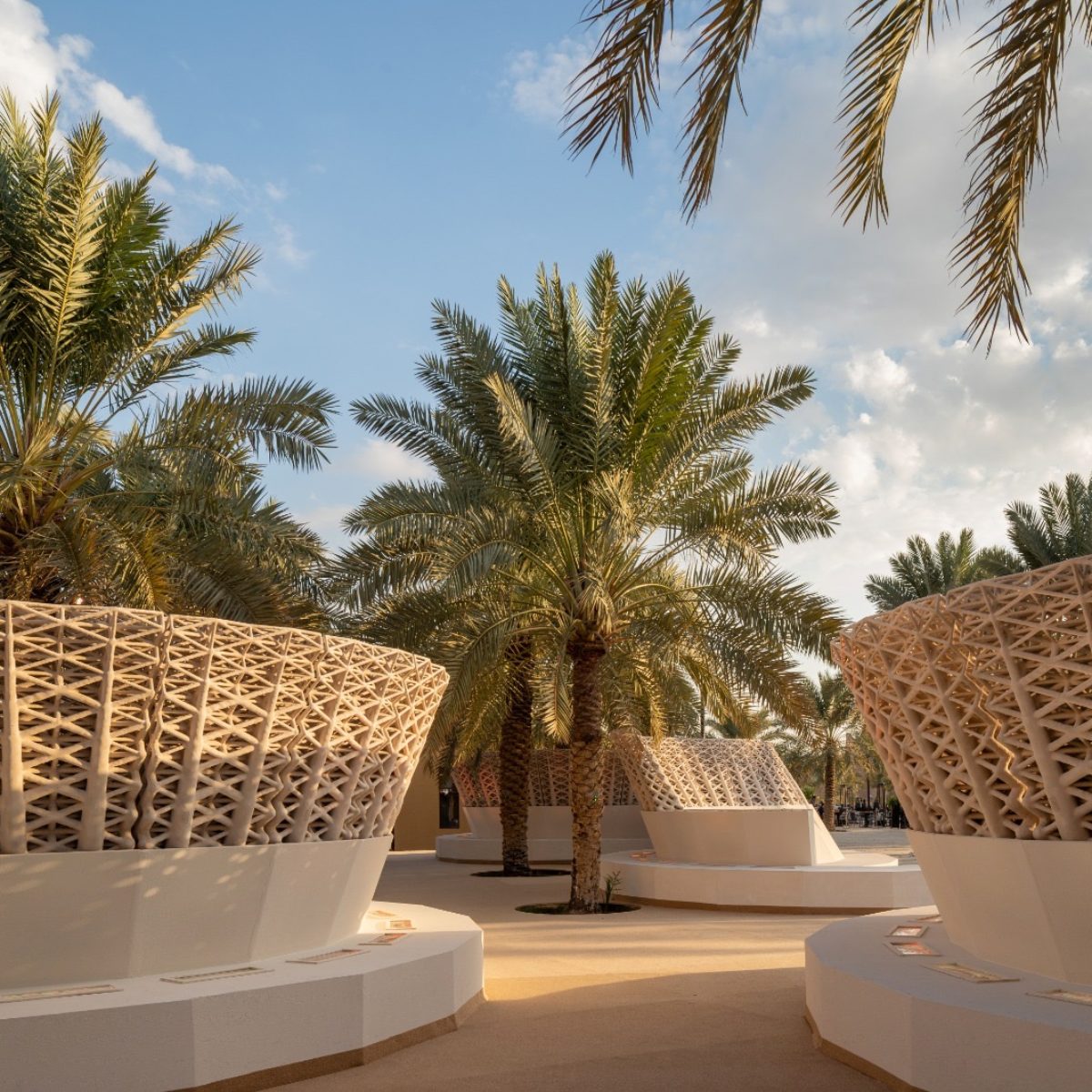DATE 2019
LOCATION RIYADH
STATUS COMPLETED
CLIENT DESIGN LAB EXPERIENCE
TEAM
Mamou-Mani & Studio Precht
(in collaboration with Design Lab Experience)
Studio Precht: Chris Precht, Fei Tang Precht, Andreas Stadlmayr, Zizhi You
Mamou-Mani: Arthur Mamou-Mani, Ayham Kabbani, Nina Pestel, Sash Onufriev,
Youen Perhirin
Design Lab Experience: Mootassem Elbaba, Hibah Elbakree, Nausheen Baig
Fab.Pub: Giovanni Panico, Holly Hawkins
Format Engineering: James Solly, Sara Andreussi
Special thanks: PSU university students, Afan Sufak Manziel, SMI, Rely
“We believe that true innovation builds upon the achievements of the past. Innovation looks at history, learns from it and reinvents it for our future demands. We believe that responsibility starts locally and uses regional resources to create visionary projects. The Sandwaves are an example of responsible innovation that can have a positive impact on the future of our built environment.” Chris Precht
“We believe that technology, nature, craft and tradition can all enhance each other. From the Najdi cultural heritage to the neighboring palm trees and sand dunes, from the power of the computer to 3D printing,we believe in a holistic approach to design. With this project, we would like to celebrate both the past and the future. A future that uses advanced tools to integrate both nature and culture. We want this project to tell a story through its many layers… A journey of continuous discovery.” Arthur Mamou-Mani
“A modular urban installation 3d printed with sand and furan resin. A parametric lattice thickening based on structural forces, flowing benches dancing around palm trees creating a calm oasis. It is such a pleasure to work with a team who believes that technology can help the planet, willing to explore and experiment with new techniques and to inspire with new possibilities despite the big challenges” Arthur Mamou-Mani
“A 3d-printed installation in sand and furan resin (cellulose of pine-trees and corn kernels). The lattice-thickness is based on structural forces and connect visually to the pattern of palm-trees forming a homogenous, natural appearance.” Chris Precht
Questions:
How did the Sandwaves project come to be, and what is its function?
AMM: The Sandwaves are part of an event called the Diryah Season. Design Lab Experience contacted Chris Precht to do a project similar to his studio’s SoundWaves. Chris thought it would be better to come up with something new, he gave me a call to collaborate on the project. I love his studio’s approach and believe it is very aligned to our values.
We decided to join forces, bringing technology and nature closer through a more holistic approach to design. The projects is used as urban furniture, benches, but also form a journey through the beautiful historical site, a place to relax and contemplate.
Why did you choose to use work with sand?
AMM: We both believe in the craddle to craddle approach to design, using materials that can go back to their natural state, leaving no trace.
We asked ourselves what is the most common raw material around so sand came naturally to our minds.
What are the benefits and challenges of sand-printed architecture?
AMM: It’s not a strong material so we ended up with very thick members and each piece was about 160kg. Our engineers Format generated parametrically the lattice thickness based on the material property.
The process of printing with sand is mostly use to create custom metal mould for casting. With a bit more time we could have reinforced some of the key elements with some metal cast within the lattice with the tensile and thinnest members in metal.
“The Sandwaves is a manifestation of the kind of innovation that is needed for our time” – can you expand on this?
CP: Building in an ecological way, also means to build with local materials. In Bali that’s bamboo, in Austria that’s wood and in the Middle East that’s sand. The first buildings ever constructed were done in sand. We all know what’s needed to build sand-castles. So building with sand is deeply rooted in traditions and childhood memories. But with new technology it’s possible to use the material in an innovative and interesting way.
What inspired its organic and perforated aesthetic?
CP: The aesthetics are drawn from patterns of the surrounding architecture and plants. Bris-soleils, ornaments and palms all have a similar effect. We tried to adapt the sandwaves to its background in a very organic way.
Is furan resin the stuff binding the sand?
We’re using Furan which is a binder made of cellulose of pine-trees and corn kernels. The ExOne printer has two buckets of fine sand with a scooper that adds layers of sand whilst a roller deposits the resin. Once done, the print has to be removed from the soft sand like an archaeological remain, it is black as a result of the chemical reaction. We had to sand blast it with the same sand.


